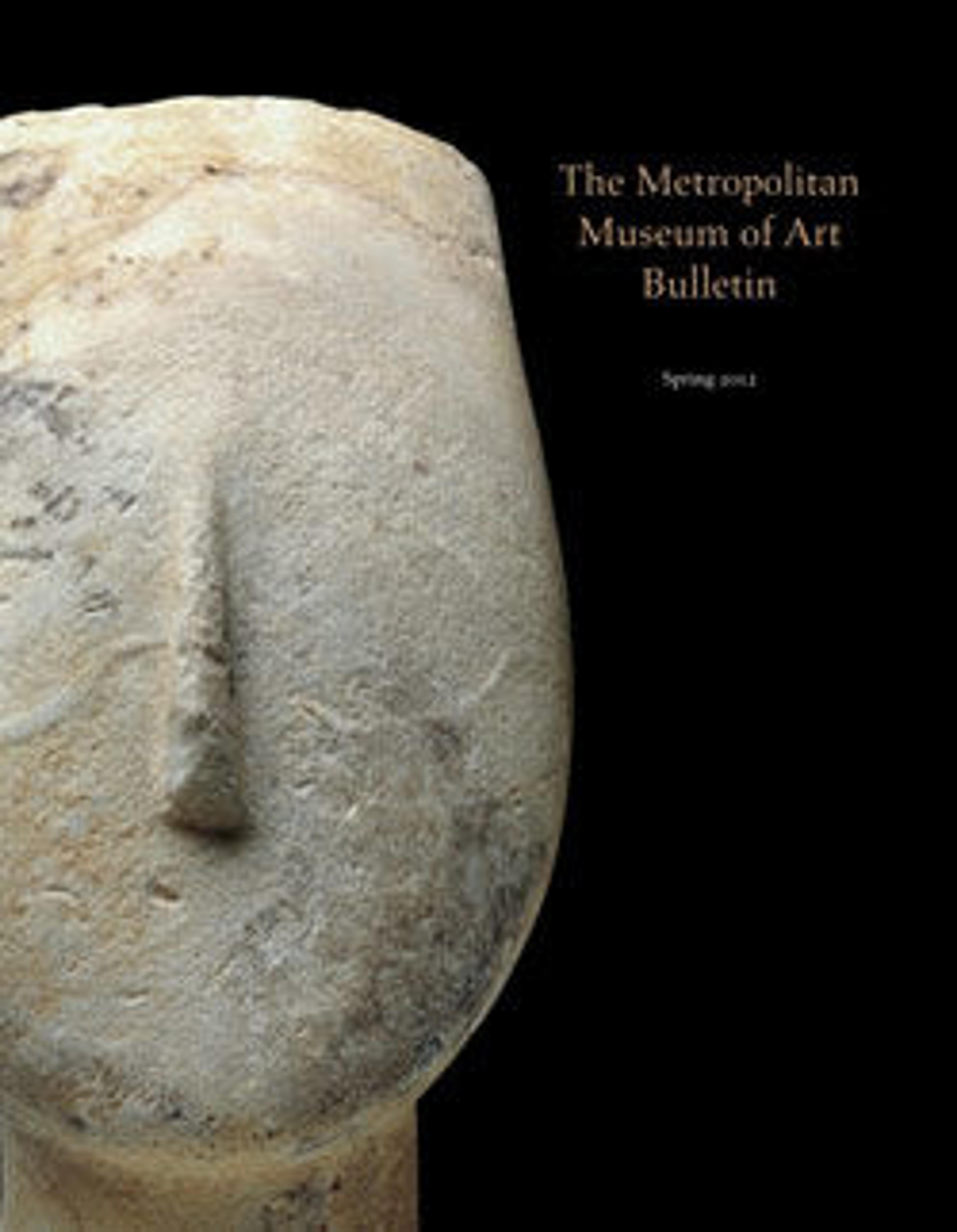Copper ingot
Cyprus is thought to have been the main producer of copper in the Late Bronze Age, although very few ingots, apart from miniature votive ingots, have been found there. Ingots of this characteristic shape were made only in the Late Bronze Age and seem to be the usual form in which pure copper was transported as a raw material to the ports of the eastern Mediterranean. Copper was mixed with tin, usually in a nine-to-one ration, to make finished bronze objects such as the adjacent stand (74.51.5684). The ingot's irregular surface was produced as the pure copper cooled in the open mold in which the metal was cast. The sheer weight of the ingot, approximately sixty-three pounds, is testimony to the large scale of the copper industry at this time and the bulk quantities of copper that were being exchanged. The discovery off the coast of Anatolia at Ulu Burun of a Late Bronze Age shipwreck with a cargo of over ten tons of Cypriot copper ingots provides remarkable confirmation of the extensive international metals trade in which Cyprus clearly played an important role.
Artwork Details
- Title:Copper ingot
- Period:Late Bronze Age
- Date:ca. 1450–1050 BCE
- Culture:Cypriot
- Medium:Copper
- Dimensions:Width: 14 3/8 in. (36.5 cm)
Length: 17 1/2 in. (44.5 cm)
Weight: 63 lb. (28.6 kg) - Classification:Bronzes
- Credit Line:Rogers Fund, 1911
- Object Number:11.140.7
- Curatorial Department: Greek and Roman Art
Audio
1100. Copper Ingot, Part 1
0:00
0:00
We're sorry, the transcript for this audio track is not available at this time. Please email info@metmuseum.org to request a transcript for this track.
Listen to more about this artwork
More Artwork
Research Resources
The Met provides unparalleled resources for research and welcomes an international community of students and scholars. The Met's Open Access API is where creators and researchers can connect to the The Met collection. Open Access data and public domain images are available for unrestricted commercial and noncommercial use without permission or fee.
To request images under copyright and other restrictions, please use this Image Request form.
Feedback
We continue to research and examine historical and cultural context for objects in The Met collection. If you have comments or questions about this object record, please contact us using the form below. The Museum looks forward to receiving your comments.
